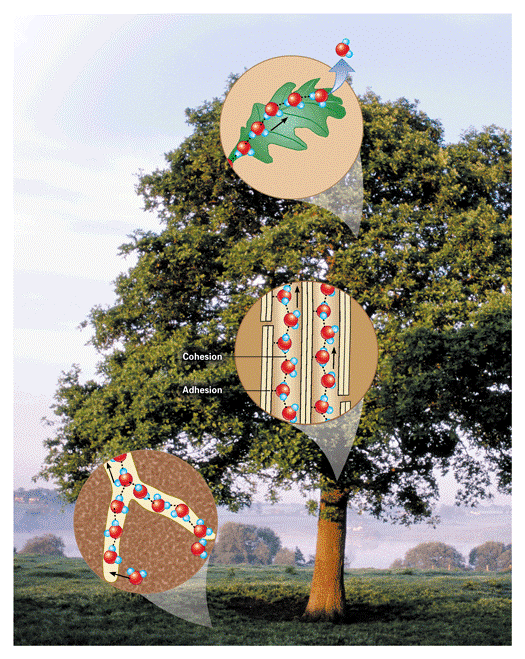
THE CHEMISTRY OF LIFE
Water and Why it Matters:
Why water is important:
Hydrogen bonding in water makes water lattices that constantly break and reform letting water molecules slip past one another and go to a new position. This contributes to the multiple properties of water that allows it to support life.
The different properties of water are:
Freezing:
When water freezes it creates an ice lattice. The ice lattice creates more space between the water molecules than in a water lattice causing ice to become less dense that water.
Ice forms an insulating layer above bodies of water like the ocean when the temperature is cold and helps keep the water below warm. This prevents the water from completely freezing making it favorable for aquatic organisms.
Cohesive, Adhesive, and Surface Tension:
Cohesive forces in water allows water to stick together due to the constant forming and breaking of hydrogen bonds. Adhesive forces allows water molecules to stick to walls of tubes by making hydrogen bonds with the polar groups in the molecules from the wall. Surface tension is when water molecules on the surface are under tension making them resistant to seperation.
Surface tension, cohesiveness, and adhesiveness allows for water to be transported in organisms such as trees. In trees, water molecules in the xylem flow up against gravity to replace the water lost through evaporation. Cohesive forces allows the water molecules to stick to each other and adhesive forces allows water to stick to the walls of the xylem. Surface area helps keep the water molecules together and all three forces working together allow water to be drawn up from the roots and transported to the leaves.







High Specific Heat:
Hydrogen bond lattice of water prevents the escape of individual water molecules as water is heater. It allows water to absorb and release large amounts of heat without extreme changes in temperature.

High specific heat of water allows water to stabilize the temperature in the environment and make it habitable. The high specific heat capacity of water also helps with creating a moderating and stabilizing effect on living organisms.
High Heat of Vaporization:
Water has a high heat of vaporization due to the continuous forming and breaking of its hydrogen bonds. It takes 540 cal to evaporate 1 g of water.

The high heat of vaporization of water helps with evaporative cooling in animals and plants which helps in maintaining homeostasis. Heat lost through the form of sweat helps prevent the body temperatures of organisms from increasing when the surrounding temperature in the environment is hot.


Versatile Solvent:
Due to water’s polarity and hydrogen bonding, it is a good solvent for all polar and charged molecules. Water molecules are able to coat the surfaces of other molecules creating a hydration layer that reduces the attraction between the atoms in those charged or polar molecules. The hydration layer prevents the separted ions from reforming back into molecules. Minerals and nutrients are dissolved in water that allows it to be easily absorbed and transported by plants and animals.


Medium for Biological Reactions:
Living cells contain up to 95% water and most biological reactions happen under aqueous solutions.

Ingredients of many biological reactions:
Many biochemical reactions need water as a reactant. In photosynthesis, water is used to split light in order to get electrons for the fixation of carbon dioxide into sugars. In hydrolysis, water is used to break down complex molecules.
